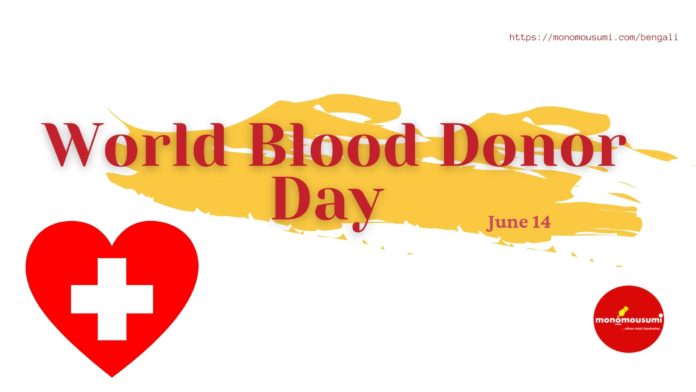“You don’t have to be a doctor to save lives, just donate blood”. World blood donor day is celebrated on 14th June every year. It reminds us our obligation as responsible citizens to donate blood for the twelve thousand people who perish in India every day due to lack of blood.
Blood Donation is drawing out of blood from a person voluntarily and using it for transfusions. It plays a great role in emergency units. Blood banks play an indispensable role when it comes to catering patients in war fields. For instance Charles Richard Drew was an American surgeon whose researches were majorly based on blood transfusions. He used his knowledge to develop large scale blood banks during World War II.
Blood donation and blood transfusions are areas of great interest in the spectrum of medical sciences. Students are made aware of Blood transfusions and their duty as accountable citizens to donate blood when they are in the condition to do so. They are encouraged to spread awareness among people and encourage all the members of the community to donate so that we can ensure the wellbeing of everyone around us.
The curriculums of all major boards have included the importance of blood donation. They have highlighted the need for awareness. In addition, many schools host donation drives, encouraging staff members to participate and be a model for the budding generation.
An interesting case of blood transfusion is the Rh Incompatibility seen in infants. Which simply means the mixing of the Rh positive and Rh negative blood of the mother. This may lead to jaundice in the infant.
The Rh blood is present in the humans along with the well versed four groups A, B, AB and O. These can be present as positive or negative. The Rh blood is similar to the ones found in the Rhesus Monkey. Hence its name Rh. Rh blood is also present as positive and negative.
Blood donation drives are commonly held in hospitals. They are also hosted by several charitable trusts and organizations. World Blood Donor day is one of the most important campaigns marked by the World Health Organization. Some of the well-known and inspiring themes for these drives include “Blood connects us all”, “Give the gift of Life: Donate Blood” and “Thank you for saving my life”.
One of the major social issue regarding blood donation dates back to the period of the World War II. A policy of segregation of blood between the blacks and whites were followed which led to the Medical Researcher Charles to resign his position with the American Red Cross. This policy continued till 1950 supporting racism and was strongly provoked by critics.
The other major issues are those associated with the well-being of the donor. First time teenagers and women have a higher threat of reaction. About 2% of the donors have hostile reaction to a donation.
Other issues of donating is fainting, dizziness, vomiting and nausea. However these side effects invade only the vulnerable. Sufficient Health examinations are held to ensure that the donators are physically and mentally stable to undergo the process of donation and are not forced to take it up.
Donors are usually kept at the donation site for some time after donating since most of these effects take place immediately after donation. In hot climates essential precautions are advised to be taken to prevent dehydration.
The shelf life of RBC’s are 35-42 days at refrigerated temperatures. For long time storage the blood is mixed with glycerol and refrigerated, but this can be expensive.
The demand of blood is always extensive, especially in a country like India where the net accident rate is high. The large working population travelling in vehicles are prone to accidents, due to the great inflow and outflow of vehicles. India being one of the most populated country faces lack of blood donation due to increased accident rates and low donation rates.
This can only be encountered by implementing strict traffic rules and creating awareness among people about donation drives. Encouraging economically steady Hospitals and organizations to conduct paid donations is also another way to increase the inflow of donators. Providing concessions in hospitals for donators and imposing fines for traffic violators are some ways to prevent the lack of blood.
In some countries regular donors are given some sort of non-monetary recognition. The donors also receive incentives at the site of donation. However the main reason people donate is due to selflessness and as an act of charity. “Blood Donation costs you nothing, but it means a lot to someone in need”.
By Monica Dominic Xavier











